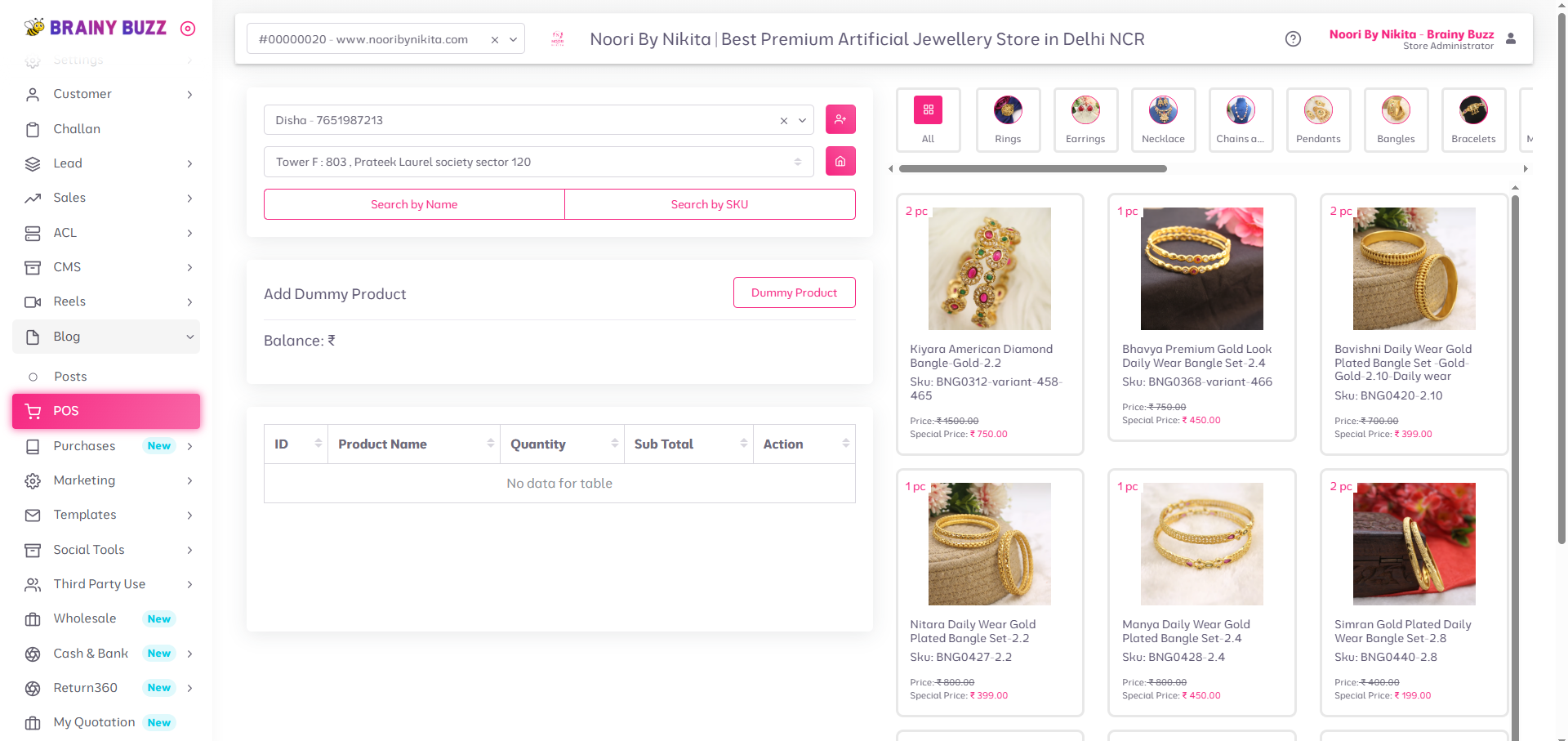BrainyBuzz – From Idea to Launch for Ecommerce Solutions
Introduction
In today’s highly competitive digital landscape, businesses are constantly searching for innovative ways to reach a broader audience without overspending on marketing. Striking the right balance between cost-efficiency and customer engagement is key to sustainable growth. One particularly effective strategy we implemented focused on maximizing customer reach while minimizing marketing expenses. By offering a small but meaningful incentive—a free gift to users upon registration—we not only attracted a significant number of new customers but also saw a noticeable boost in sales and brand trust. Here's how this simple yet impactful idea helped us achieve our marketing goals more efficiently.
Challenges and Solutions
Technical Challenges
1. Multi-Domain Handling via Reverse Proxy (Vue.js + Nginx)
One of the key technical hurdles was supporting multiple custom domains within the same project instance. Since our frontend is built using Vue.js, we used a reverse proxy setup to manage routing.
- Initially, our Vue.js frontend was running on localhost:3000, which created issues when trying to dynamically handle different domains pointing to the same app.
- To resolve this, we implemented domain-based routing by updating our Nginx configuration to extract and forward the domain name to the backend. This allowed the app to determine the active tenant or configuration based on the accessed domain.
2. SSL Certificate Management via Cloudflare
Supporting HTTPS for multiple domains in troduced another challenge, especially since the domains were managed via Cloudflare.
- The main issue was issuing and validating SSL certificates for all connected domains, especially during initial domain pointing.
- We solved this by leveraging Cloudflare’s Flexible SSL and later transitioned to Full SSL (Strict) once certificates were properly issued.
- To ensure all traffic was redirected to HTTPS, we added appropriate redirects and header rules via both Cloudflare page rules and by updating the .htaccess file on the server.
How Each Was Solved or Mitigated
- Nginx-based domain detection solved tenant-specific views.
- SSL enforcement via .htaccess and Cloudflare rules ensured a consistent and secure experience.
- Progressive deployment and testing helped avoid downtime during configuration changes.
Testing and Quality Assurance
Manual and Automated Testing
Although automated testing was minimal in the early stages, we focused heavily on manual testing across various user flows including checkout, cart, order placement, and dashboard activities.
Bug Tracking and Resolution
Bugs and enhancements were tracked via Git-based issue management and resolved through structured code reviews.
Code Quality and Workflow
To maintain code hygiene, we implemented a Git workflow with the following rules:
- Every commit must include clear, descriptive messages.
- Developers were instructed to avoid dd() in Laravel and console.log() in Vue.js in production-level code.
- Pull requests were reviewed for code formatting, comments, and potential edge case issues.
User Acceptance Testing (UAT)
Final releases were tested in a staging environment that mirrored production to ensure:
- Feature completeness.
- No critical bugs.
- Compatibility across browsers and devices.
Deployment and Launch
App Deployment on AWS
We deployed BrainyBuzz on AWS, leveraging its scalability and reliability to host both the frontend and backend services. The infrastructure was designed to support growth and handle increasing traffic with minimal downtime.
Automated Git Workflow
Our deployment process is tightly integrated with Git. Upon every code push:
- The system automatically compiles the code.
- Caching mechanisms are cleared and refreshed.
- Routine maintenance tasks like cache warming and queue processing are handled via cron jobs to ensure optimal performance.
Error Monitoring and Notifications
To maintain system stability, we set up real-time error notification emails. Whenever an error occurs on the platform:
- The system immediately sends detailed error reports to the admin’s email.
- This enables the team to quickly identify and resolve issues before they impact users.
Additional Deployment Considerations
- SSL certificates and domain routing were handled as previously discussed, ensuring a secure and seamless user experience.
- Rollbacks and hotfixes are managed through our Git version control, minimizing risk during updates.
Post-Launch Insights
User Feedback and Reviews
After launch, gathering user feedback became a critical part of our growth strategy. We actively monitored customer reviews and support tickets to understand pain points and areas for improvement. Positive feedback highlighted the ease of use and comprehensive features, while constructive criticism helped us identify opportunities to streamline workflows and enhance user experience.
Performance Metrics
We tracked key performance indicators such as user acquisition rates, conversion rates, average order value, and customer retention. The integrated dashboard allowed real-time monitoring, enabling data-driven decisions. Early data showed promising growth in both active users and sales volume, validating our market assumptions.
Updates and Iterative Improvements
Based on user insights and performance data, we prioritized updates that enhanced core functionalities and added new features like improved bundle options and advanced reporting tools. Regular iterative releases ensured the platform stayed aligned with user expectations and market trends. We also continuously refined backend processes for speed and scalability.
Strategic Reflections
The post-launch period reinforced the importance of agility — being responsive to feedback and market dynamics was key to sustaining growth. It also underscored the value of building a product that not only meets but anticipates user needs through proactive enhancements.
Key Takeaways
Lessons Learned
- Flexibility is essential: Transitioning from a single-brand e-commerce app to a multi-tenant SaaS platform required adaptable architecture and careful planning.
- Effective domain and SSL management are critical when supporting multiple clients under different domains, especially with third-party services like Cloudflare involved.
- Third-party API dependencies can introduce unpredictability. Building internal fallback mechanisms and staying updated on API changes helped maintain stability.
- Strong Git workflows and code discipline improve code quality and reduce bugs, especially in fast-paced development environments.
Advice for Future Projects
- Prioritize scalable infrastructure early to accommodate growth and multi-tenancy.
- Invest in automated testing alongside manual QA to catch issues earlier.
- Document API interactions clearly, and maintain close communication with third-party providers when possible.
- Engage with users continuously post-launch to ensure the product evolves with their needs.
What We’d Do Differently
- Implement automated staging environments sooner to test third-party integrations more safely.
- Allocate more resources for UI/UX testing, ensuring a seamless experience across all devices from the start.
- Enhance monitoring and analytics setups to proactively catch performance bottlenecks.
Conclusion
Building BrainyBuzz from an idea to a full-fledged SaaS e-commerce platform was an enriching journey filled with learning and growth. By focusing on a strong technical foundation, responsive user feedback, and continuous iteration, we created a product that not only serves a niche market effectively but also has the potential to scale widely.
Till now, we have more than 10 active clients on our platform, and this number is steadily growing as we continue to enhance features and improve the user experience.
We’re excited about the future possibilities and welcome questions or connections from anyone interested in the project or similar ventures. Do check out CodeHunger for your one step solutions !!














